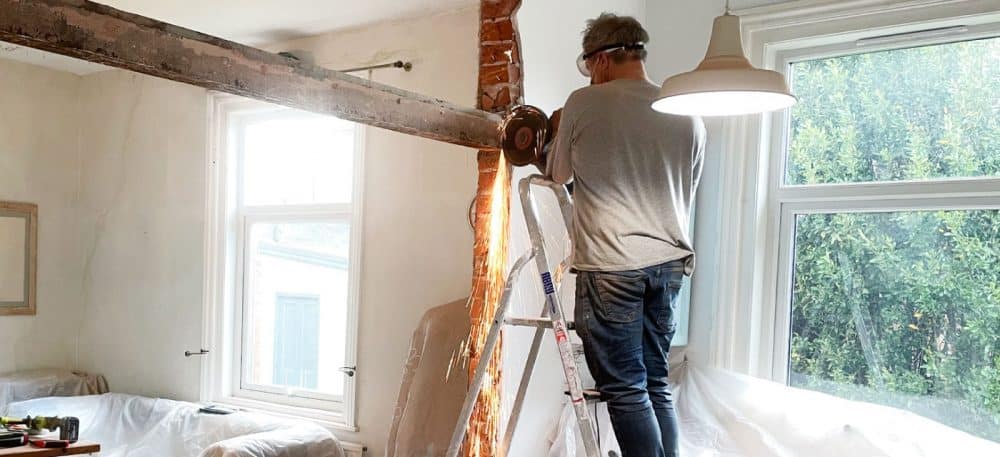How To Use A Home Equity Line Of Credit (HELOC)
Learn how a HELOC works, what you can use it for, and what to consider before borrowing against your home’s equity.

When deciding how to take equity out of your home, you have multiple options. One smart way is through a home equity line of credit (HELOC). Its main appeal is that interest rates are usually much lower than those for personal loans and credit cards.
But what exactly is a HELOC, and how does it work? Keep reading to learn the basics, how to use a HELOC, what restrictions there may be, and when an alternative funding option might be a better fit.
What Is A HELOC?
A HELOC is a revolving line of credit secured by your home’s equity. The amount you can borrow depends on how much equity you’ve built.
When comparing a HELOC versus a home equity loan, the primary difference is flexibility. A home equity loan provides a one-time lump sum with fixed repayment terms, while a HELOC allows you to borrow as needed, typically at a variable interest rate.
Here’s how it works:
- Submit an application. The lender will review your home’s value, available equity, and financial profile to determine your credit limit.
- Access funds when you need them. After you’re approved, borrow as much or as little as needed through checks, online transfers, or a debit card (if available). There’s no requirement to take the full amount at once, although a minimum advance amount may be required.
- Pay interest only on what you borrow. Interest is charged only on the funds actually used to help keep costs lower during the draw period.
A HELOC is similar to a credit card – you can borrow, repay, and borrow again, as long as you stay within your limit. The key difference is that your home secures the line of credit, so falling behind on payments could put your home at risk.
Aside from a HELOC and home equity loan, another option to take equity out of your home is to do a cash-out refinancing.
What Can A HELOC Be Used For?
A HELOC can be used for almost any expense, giving you the flexibility to cover planned projects or unexpected costs. Whether you’re looking to invest in your home, manage debt, or handle life’s surprises, a HELOC provides access to funds when you need them. Here are a few common ways people put their HELOC to work:
1. Business Capital
Compared with other loan types, a HELOC is a cost-effective way to secure the funds you need to start a new business or expand an existing one. However, entrepreneurship can be a risky venture. If profits fall short, you might struggle with HELOC repayments and risk losing your home.
To be on the safe side, ensure you have a solid business plan and a realistic repayment strategy before using your home’s equity for business funding.
2. Debt Consolidation
If you’re struggling to pay off multiple high-interest debts, consolidating them with a HELOC can simplify your finances. You can combine credit card balances, personal loans, and even student loans into one single payment. This process turns unsecured debt into secured debt, with interest rates averaging 8.14% as of 2025.


Debt Consolidation
See if debt consolidation makes sense for you by entering your loan amounts, credit card balances, and other outstanding debt into our calculator to estimate your potential monthly payment.
3. Emergency Fund
A HELOC creates a financial safety net for unexpected expenses. Whether it’s an urgent repair or medical emergency, a HELOC provides access to funds without straining your budget. It also provides quick cash for a home renovation project after a natural disaster. While having a dedicated emergency fund remains essential, a HELOC offers a reliable backup if your savings fall short.
4. Legal Expenses
Huge legal fees, such as those arising from property disputes or tax-related issues, can be difficult to pay upfront. A HELOC provides a short-term solution in these situations. That said, it’s important to treat your home equity as a financial cushion, not a convenience. Use this option only for urgent legal matters where delayed payments could lead to serious problems.
5. Medical Procedures
Certain medical procedures, including elective surgeries, fertility treatments, and skin rejuvenation, may not be fully covered by your insurance policy. Your HELOC steps in where insurance taps out. It provides the funds you need to pay for life-improving procedures without draining your savings or piling up credit card debt.
6. Education Expenses
A HELOC can help cover education costs, whether it’s certification courses for you or college tuition for family members. It’s a clever way to finance your studies without taking on hefty student loans. As a vital first step, compare HELOC interest rates, repayment terms, and potential tax benefits with those of student loans. Then, opt for a HELOC only if it provides the most benefits.
7. Home Improvement
Most people use a HELOC to renovate their living spaces and offices, which is a smart move if you’re looking to sell.
You can increase your home’s value with these upgrades:
- Remodel your kitchen or bathroom
- Install energy-efficient appliances, such as smart thermostats, refrigerators, and ovens
- Replace old garage doors with newer models
- Repaint interior and exterior walls
- Replace old windows and doors
These improvements do more than just enhance your home’s market value. For instance, energy-efficient upgrades may qualify you for annual tax credits of up to $3,200, offsetting renovation costs.


Home Improvement Projects
Find out when to call in a professional for help with your home renovations as opposed to doing it yourself.
Restrictions On How To Use A HELOC
While there are no hard-and-fast rules about how to use a HELOC, remember that you’re borrowing against your home’s equity. Because of this, it’s wise to reserve these funds for essential expenses.
Therefore, a HELOC may not be the best option if:
- Your home is your only asset. Using your home as collateral leaves you vulnerable if things go south. Explore alternative funding sources if your home is your only fixed asset.
- You don’t have a stable income. Without a steady income, it becomes tough to keep up with repayments. This can eventually cost you your home.
- You plan to buy luxury items. Luxury purchases depreciate instantly while your debt keeps increasing. So, using a HELOC for non-essential expenses like luxury vacations or designer products isn’t recommended.
- You want to pay for everyday essentials. Regular bills, such as groceries and utilities, may only cost a few dollars, but they add up quickly and potentially worsen your financial situation. Also, relying on a HELOC for everyday essentials signals poor financial health and calls for urgent attention.
- You want to invest in high-risk ventures. While investments like cryptocurrencies and stocks can be profitable, they also carry significant risks. Losing money on these could result in foreclosure on your home.
Is A HELOC A Second Mortgage?
Yes, a HELOC is called a second mortgage because it’s usually a loan that uses your home as collateral in addition to your original mortgage. When you buy a home, the first mortgage covers the purchase price. If that loan is still outstanding, any additional loan you take against your home’s equity – like a HELOC – is considered a second mortgage.
Even if your house is fully paid off, a HELOC still leverages your home’s equity as collateral, effectively serving as a second type of borrowing against the property. In this case, it acts like a second mortgage in concept. However, some lenders may allow a HELOC to be positioned as the first lien, or primary loan, since there’s no other mortgage ahead of it.
Does A HELOC Require An Appraisal?
A HELOC often requires an appraisal to determine your home’s fair market value and your current equity. This helps lenders calculate your borrowing limit and figure out how much they’re willing to lend.
To speed up the process, some lenders use an Automated Valuation Model (AVM) instead of a full appraisal. This data-driven tool compares your property to similar homes and uses a machine-learning algorithm to determine its value.
How Do You Access Money From A HELOC?
After your HELOC is approved, lenders offer several ways to access your funds:
- Online Transfer: Most lenders allow you to transfer funds to your checking account. However, withdrawal requests may take a few days to process.
- HELOC Card: Some lenders issue a HELOC account card, which functions like a debit card. You can use it to make purchases or withdraw cash from an ATM.
- In-Person Withdrawals: Others might require that you visit a branch to withdraw money.
- Checks: Some lenders provide special checks linked to your HELOC account. You can write these checks to move funds from your credit line.
If you’re unsure which withdrawal methods apply to your HELOC, review your loan agreement or ask your lender for clarification.
A+FCU Can Help Put Your Equity To Work
If you’re looking to fund your home improvement project, cover a medical emergency, or consolidate high-interest debts, a HELOC might be the solution you need. With A+ Federal Credit Union, you can tap into your home’s value more conveniently with personalized assistance from our Mortgage team.
A+FCU offers a minimum loan amount of $25,000, ensuring a smart and affordable way to finance what matters most. Enjoy competitive interest rates and access the funds you need – when you need them.
Apply for a HELOC today and turn your home’s equity into cash.
Membership required. LTV = Loan to Value. Programs, rates, terms, and conditions are subject to change without notice. Normal lending criteria apply. All loans subject to credit approval. Rates are subject to credit score, loan-to-value matrix adjustments, and normal credit underwriting factors. Property must be located in Texas and primary owner-occupied single-family residence. $495 processing fee for loans less than $40,000. $795 processing fee for loans $40,000 and above. Under Texas law, the combined loan-to-value (CLTV) cannot exceed 80% of your home’s value. NMLS #405608.


Apply For A HELOC
Your home’s equity is a valuable financial tool that can help you cover planned projects or unexpected costs so you can stay on track.
Related Articles
How Does Paying Back A HELOC Work?

Understand HELOC repayment, what happens after payoff, and key Texas regulations before borrowing against your home’s equity.
How Much Equity Do You Need To Refinance?

Learn how much equity is needed to refinance, explore loan options, and familiarize yourself with key requirements to make the best mortgage refinancing decision.
Adjustable-Rate Mortgage: What Is It & How Does It Work?

Learn how an Adjustable-Rate Mortgage works, what makes it different from a fixed-rate mortgage, and when it could be a smart choice for your financial goals.
